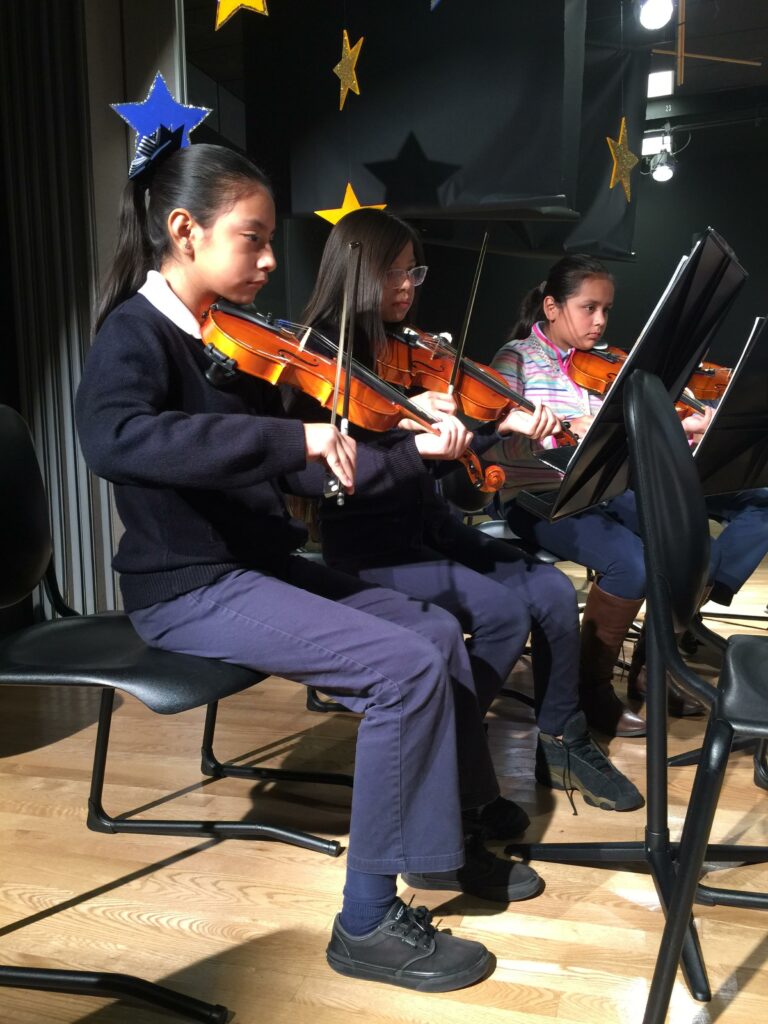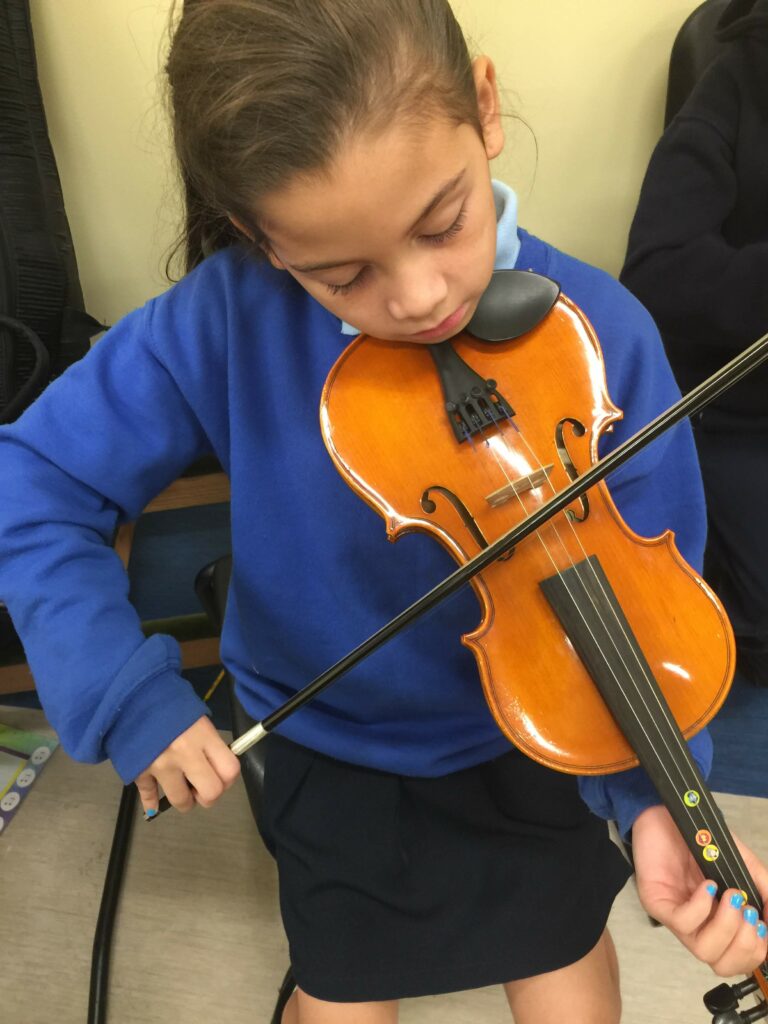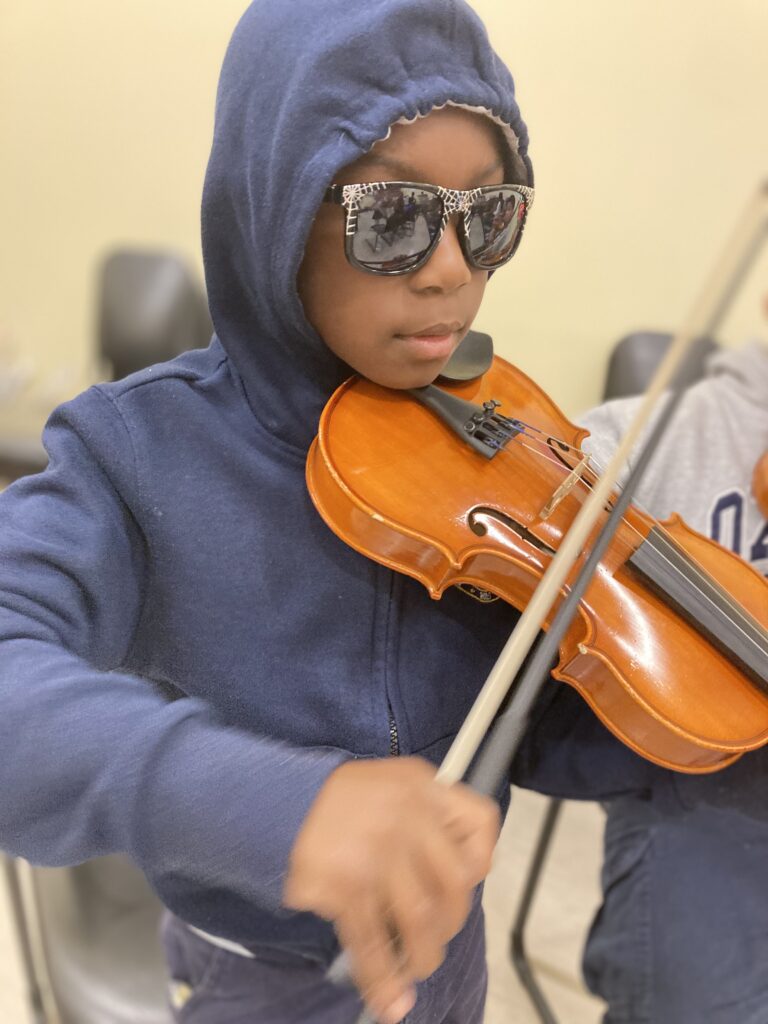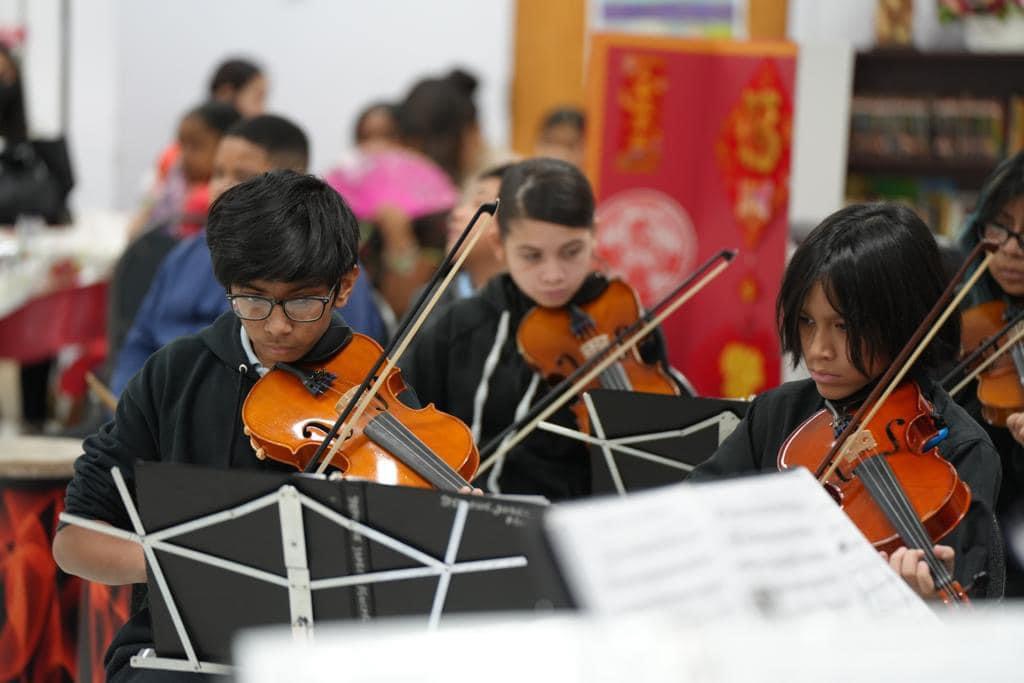The positive impact of the arts
As a music educator, I’ve often advocated for my own programs with the understanding that music benefits the whole student. I’ve experienced firsthand how students develop socially, emotionally and academically because of their involvement in my program. Involvement in music helps to develop discipline, self-esteem, community building, communication skills and grit, to name a few.
Most people would probably agree with the benefits of education in the arts. But as we go through the daily grind of the school day, these long-term benefits may be swept under the rug as we are bogged down by curricular deadlines, student management strategies, administrative tasks and achievement scores. Music teachers may find it hard to schedule adequate time to see their music students, and general education teachers may be reluctant to let their students miss class for music.
Even though we know the arts are good, even though we know we want those experiences for our students, sometimes priorities shift. At each developmental stage of a young student, participation in performing arts can have a significant impact.

Fourth and fifth graders practicing on stage in a dress rehearsal for their upcoming concert.
Prioritizing the arts
Until I recently accepted a position in Newark, I was fortunate to be part of a school community that has a high appreciation for and support of the fine and performing arts. That school, the Passaic Gifted and Talented Academy (PGTA), is part of the Passaic Public Schools system. According to the state’s report card for PGTA, the city of Passaic is 92.5% economically disadvantaged and 30.5% of students are English language learners.
PGTA accepts students through an application process and offers a unique approach to student offerings and opportunities for elementary and middle school students. The school provides intensive study in the areas of performing arts (band, choir, theater and strings), visual arts (2D, 3D, digital and media art), and physical education (sports, coaching and health), in addition to their general studies.
In a conversation with PGTA Principal John Mellody, we discussed how the school’s approach to prioritizing the arts in scheduling benefits our students.
Upper elementary and middle school students receive six periods a week of their “strand,” or major area of study. For example, a student would be scheduled for my string orchestra class three days a week for a double period. This equals to 240 minutes a week of music study, all happening during the school day.
I asked my principal if this amount of time negatively impacts their other studies. His response was, “No, actually quite the opposite!” Our school is the highest performing elementary and middle school in the district. Mellody attributes our rise to the top to the arts, as an integral part of our achievement.
Benefits of the arts in general education
My curiosity has led me to consider how my general education colleagues experience the benefits of music education in their own classrooms. I asked them two questions: “What role does music education play in our school community?” and “How is music education beneficial for our students?”
The ultimate goal was to better understand from an outside perspective what role music education plays in student development academically, socially and emotionally.
As teachers reflected on these questions, a major theme emerged. All the teachers interviewed expressed that access to music education positively impacts other aspects of a student’s learning experience.
As students are introduced to and incorporated into the school music program, their involvement produces an immense inner and outer sense of pride and accomplishment. Successful experiences in music class provide students with the confidence to tackle challenges presented in their other classes. Teachers identified a definite connection between music and students’ improvement in their academic and social-emotional skills.

Great beginnings
At PGTA, second and third graders participate in music classes once or twice a week, equaling 40 to 80 minutes of musical instruction. In their music classes they learn singing techniques and music theory and receive instruction for the ukulele, recorder and violin. The school’s vision is to provide rigorous instruction in core academic subjects as well as the arts, thus the second and third graders gain musical exposure that is foundational to their growth as students and musicians.
What do the teachers of our younger students see as the benefits of musical instruction? Prudence Price, a veteran teacher of Passaic Public Schools, is very committed to the arts personally and professionally. Having participated in music during her childhood and in college herself, and now with her daughter pursuing vocal jazz performance, Price understands what kind of impact music education can have on students as they navigate through their educational journey.
Price witnesses the benefits of music instruction every day. As she reflected on music’s impact on her students, she explained that music “acts as a catalyst for motivation that encourages the students to think abstractly as well as creatively.” Her students look forward to violin class every Thursday and Friday.
“Socially, music education provides opportunities for students to meet, work and play alongside peers that have the same interests,” Price explains. She also described how music gives her students an opportunity to experience success, especially if they struggle academically.

Fostering growth
In fourth grade, PGTA students select their strands, choosing from different disciplines within the performing and visual arts. Because of the early exposure my string students have to the violin in second and third grade, many of my fourth grade students already have two years of musical experience under their belt when they join the band, choir or strings class. For the next four years, students will dedicate themselves to focusing on their musicianship and artistry in their specific field of study.
Jen McGlynn, another veteran teacher in the Passaic community, fully supports students as they participate in the arts. A language arts educator by day and painter by night, McGlynn emphasizes the importance of artistic and self-expression as she described the impact the arts has had on her students.
“Students are so proud to be part of the band, chorus or strings,” McGlynn says.
Pride in one’s work is an invaluable gift to a child who may struggle in other academic areas. The confidence children receive from their music class fuels them to tackle other challenges in school and life.
McGlynn, who serves many of the English language learners and students who may be academically behind grade level, described how participation in the arts is a vital part of their life and their success. McGlynn states that possibly because of student participation in performing arts, “I see an improvement in students academically as they progress in the school year in fourth grade.”
Direction for the middle years
Sixth through eighth graders at PGTA continue to hone the craft they selected in fourth grade. Middle school is a tumultuous and tremendous time of growth and maturity. Much is expected in the areas of responsibility, academics and independence.
As sixth graders are given the opportunity to demonstrate that they can handle more challenging tasks, performing arts students at PGTA rise to the challenge. They explore their discipline with even greater vigor and are expected to perform with higher musicianship and more performing opportunities outside the school community.
Marina Vogiatzis, a sixth grade math teacher at PGTA, has noticed the impact of the performing arts on her students.
“Every day I see students come to my class with a sense of accomplishment after a successful practice,” Vogiatzis says.
Likewise, Daniel Hennessy, sixth grade social studies teacher, describes how “the ability to act, dance, sing and perform music gives students a strong set of skills they can bring into the classroom.”
All of the teachers whom I interviewed agreed that participation in the arts is beneficial to student learning, emotional health and academic performance. Liliorara Helgiu, an eighth grade math teacher and avid supporter of the arts, agrees.
“It shows students that hard work is possible and that it pays off,” Helgiu says.
Participation in our school’s performing arts programs provides numerous opportunities for team building, positive attention and discipline during the crazy middle school years.

Mit Patel (Cali Pathway Project), Amiyah Reynoso (eighth grader), and Joshvict Escamilla (N.J. Symphony Youth Orchestra) now perform at the advanced level as middle schoolers.
A challenge to walk down the hall
Each school is one-of-a-kind—no school community can be replicated. We all serve a unique blend of students who are trying to navigate through a complicated and challenging journey called childhood.
As a member of the PGTA community, I was honored to partner with students as they learned how to play an instrument and to work alongside colleagues who understand just how important music can be in a child’s life. I am excited to partner with Arts High School as a leader and continue to foster the artistic and academic growth of students and teachers as they navigate the critical years before college and beyond.
Kathryn Ahern, sixth grade language arts teacher and newer member of PGTA, saw right away that the performing arts and academics were an integral part of our school.
“The music program here truly helps bring our school, students and staff together,” Ahern concludes.
If the arts are not already foundational to your school’s community, I challenge you to explore what may happen if you personally volunteer at a concert, intentionally seek out performing opportunities for your students, and encourage (and maybe remind) students to attend their lessons. It may make all the difference in that child’s life, and ultimately help them perform better in your class!
Evelyn, an eighth grade cellist, described in an essay the importance of music in her life.
“It opened up a world I never imagined … [my music teacher] has shown me a musical path I never knew existed,” Evelyn said.
A walk down the hall to the music room may make all the difference!
Dr. Larisa Skinner is the new department chair of Visual and Performing Arts at Arts High School in Newark. Prior to the fall of 2023, she had taught instrumental music in Passaic for 12 years. She has also taught in Thailand, China, Hong Kong and Madison, New Jersey. She specializes in urban music education and through teaching music, she hopes to provide amazing, life-changing opportunities for her teachers and their students. She can be reached at LSpitzer@nps.k12.nj.us.
Editor’s note: The author submitted a similar version of this article for publication in Tempo, the journal of the New Jersey Music Educators Association. It was published in October. Learn more about NJMEA at njmea.org.